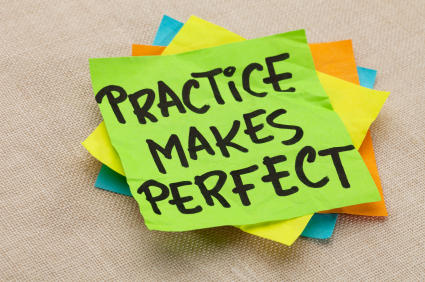Distributed Practice
created by Macie Franklin
 |
The distributed-practice effect states that one is able to retain more information if many study sessions are spread out over time. Also known as the spacing effect, it is in direct contrast to massed learning, which occurs when a student conducts few but very lengthy study sessions. Additionally, the fact that humans and even animals learn more effectively if studying is spread over several sittings over a long period of time rather than repeatedly for a short amount of time has been proven.
The first person to observe the effects of distributed practice was Hermann Ebbinghaus. Ebbinghaus, a German psychologist, used himself as a subject to study lists of nonsense syllables. Alan Baddeley also researched the effects of distributed practice. |

Links to pages and articles related to Distributed Practice.
|
What is the importance of distribution of learning trials? What learning strategy has been found to result in faster learning? These questions are answered at this link, including many reasons that distributed practice works so well.
|
|
2. http://web.ics.purdue.edu/~rallrich/learn/dist.html
From the Purdue University psychology site, this link contains an overview of an example schedule for how students should use distributed practice when studying.
|
|
3. http://www.scribd.com/doc/86531708/Distributed-Practice-Effects
This article titled "Distributed Practice Effects" expresses the advantages of distributed practice, as well as the Study Phase Retrieval, Deficient Processing, Encoding-Variability, and Multiprocess accounts.
|
|
This link contains the review from an article in CAHPERD Journal regarding distributed practice versus massed practice.
|
|
5. http://www.behavioralandbrainfunctions.com/content/6/1/8
This journal article was written after a study was conducted by psychologists in Zurich, Switzerland to determine the effects that massed practice has compared to distributed practice.
|
|
6. http://www.gse.uci.edu/docs/VlachSandhoferChildDevelopment.pdf
Referred to in this article as the "Spacing Effect," this link leads to a document containing results from a distributed practice study involving child development and acquisition.
|
|
7. http://blog.memrise.com/2012/08/spacing-effect-explained-in-2-minutes.html
This link gives a very simple explanation of distributed practice, how it was discovered, and the way it makes learning "as effortless as possible."
|
|
In this article, a Canadian psychologist tells how he believes teachers should use distributed practice effect to teach children. He explains why this method is much more effective than last-minute cramming.
|
|
9. http://www.hindawi.com/journals/np/2012/581291/
Expounding upon the molecular determinants involved with the spacing effect, this research article discusses distributed practice as observed in many different organisms.
|
|
10. http://www.ncbi.nlm.nih.gov/pmc/articles/PMC1876761/
This lengthy research journal article explains the effects of distributed practice and how learning material over a period of time enhances the memory and increases the chance of information retrieval.
|
|
11. http://www.gwern.net/Spaced%20repetition
The forgetting curve, developed by Ebbinghaus, is included in this article and represents the amount of information one can retain over a period of time.
|
|
12. http://suite101.com/article/how-to-organize-study-time-the-spacing-effect-a259909
Titled "How to Organize Study Time: The Spacing Effect," this article is a "how-to" for effective studying. It really emphasizes the organization of study time rather than amount of time spent studying during one sitting.
|
To my knowledge all images and articles are public. If there are any copyright problems please contact me at 10901018@live.mercer.edu